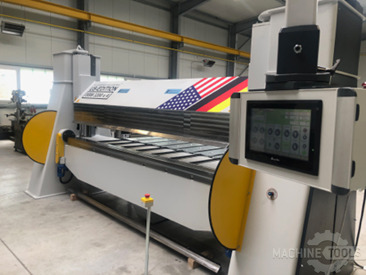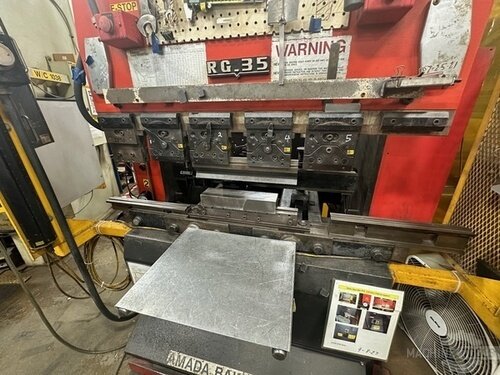I’m Joe Ryan, President of Mac-Tech (joe@mac-tech.com, 414-477-8772), and I’ve had the privilege of working in both finance and executive leadership. Through my experience, I’ve learned that every strategic decision—whether it involves direct investments, forecasts, or shaping a production approach—must be guided by a keen sense of ROI and a passion for results. In our metal fabrication market, that means blending operational efficiency with financial insight so we can help our clients thrive without compromise. I’m excited to share my perspective on the interplay between in-house and outsourced fabrication, drawing on an honest look at the real cost behind each approach.
Mac-Tech’s success draws on my background in finance and a deep respect for the leadership ideals that drive transformative growth. I’ve always believed that sustainable strategies come from accurate data, calculated risks, and a firm commitment to innovation. That’s how we’ve built our reputation—by advising clients on when it makes sense to expand production capacity or pursue specialized outsourcing options. Each path has unique pros and cons, but I’ve seen first-hand that there are clear, proven ways to maximize ROI and protect long-term viability.
Over the years, I’ve guided organizations through everything from futures trading to intricate machinery investments. Those experiences shaped my philosophy that profitable growth stems from precise planning and a proactive mindset. In short, I want Mac-Tech to be the partner that helps clients turn product visions into market realities, leveraging the best resources at the right time.
Below, I’ll share my thoughts on the relative advantages of in-house and outsourced fabrication. Ultimately, your choice should reflect your operational objectives, financial constraints, and time-to-market goals. Let’s dive deeper into how you can optimize these variables.
Balancing Strategy: In-House vs. Outsourced Gains
Having a manufacturing line under your own roof offers hands-on control of processes that many businesses simply can’t replicate through outsourcing. You gain the flexibility to shift production runs or experiment with designs at a moment’s notice, and that can be a significant competitive edge. At Mac-Tech, we’ve guided businesses through expansions where an in-house setup provided quicker turnarounds and better protectability of intellectual property.
But retaining that control often comes with escalated overhead—all the way from equipment investment to maintenance and staffing. My finance background reminds me daily that capital expenditures need clear justifications. If you’re pouring funds into machinery, training, and technology, you must ensure that the payoff is substantial enough to warrant the risk and that the capacity you purchase remains well-utilized.
On the other hand, outsourcing fabrication can preserve your operating capital, especially in the early stages of product development. When you partner with the right supplier, you can align your supply chain more seamlessly with demand forecasts, avoid idle machinery, and gain access to a broader scope of technological capabilities. These partnerships can be particularly effective for niche processes or high-volume runs where you lack internal capacity.
Yet, it’s important to remember that outsourced relationships come with their own form of risk, including potential production bottlenecks, communication gaps, and less direct oversight of quality. That’s why the decision truly hinges on a holistic business assessment—looking beyond cost factors alone and searching for alignment with your broader growth strategy.
Steering Market Growth with Mac-Tech’s Expertise
I’ve always believed that a key driver of market expansion lies in forging the right partnerships. At Mac-Tech, our mission is to unite the strength of advanced machinery with strategic financial thinking, so our clients can break into new markets or scale existing operations. Whether it’s a state-of-the-art press brake, a plasma cutting system, or automated folding machines, investing in the right equipment can fundamentally shift a business’s production capability.
We also see a strong link between lean analysis and tapping into new growth opportunities. Businesses that effectively streamline their supply chain, minimize waste, and reduce lead times are far more competitive. By helping clients evaluate which aspects of their workflows can be optimized—and where outsourcing might provide a time-to-market advantage—we enable them to seize market share.
Another factor that often arises is the question of importing certain components rather than fabricating everything in-house. Balancing local projects with imported parts can be tricky, but it’s a crucial piece of a market expansion strategy. My financial background encourages constant reassessment: does the added complexity of overseas transactions weigh down your margins, or can the cost savings and global relationships power your momentum?
Ultimately, Mac-Tech offers guidance to navigate these questions. We believe in educating our clients so they can make informed decisions about the direction of their company. By combining technical expertise with an awareness of market dynamics, we help you map out a plan that sets you apart from the competition, whether you’re exploring domestic opportunities or pursuing international reach.
DR. HOCHSTRATE 3200*6
Maximizing ROI through Cutting-Edge Fabrication
ROI is one of my favorite measurements because it links raw data with the strategic vision. At Mac-Tech, we champion advanced fabrication technology that pushes the efficiency curve and eliminates hidden costs in your manufacturing cycle. From automated fiber lasers to precision press brakes, we align cutting-edge equipment with your production needs so you see real returns in speed and part quality.
One of the first steps in maximizing ROI is identifying bottlenecks. When our clients have a clear picture of where production slows or materials go to waste, it becomes infinitely easier to decide between new equipment purchases and outsourced solutions. With my background in futures and fixed income, I’m always mindful of how small shifts in interest rates, commodity prices, or currency values can impact the true cost of capital expenditures.
Scaling operations effectively is another element of ROI. If you plan for steady growth—or sudden ramp-ups due to seasonal demand—it may be more beneficial to bring certain processes in-house, especially if you foresee a long-term profit curve. Conversely, if your production level is highly variable, outsourcing can spare you the fixed overhead of equipment and labor that might sit idle.
At Mac-Tech, our goal is to ensure that each machine or partnership delivers quantifiable benefits. Base your plans on accurate forecasting models and a wary glance at the financial markets, and you’ll be miles ahead in securing your bottom line. That’s what we do best: turn complex decisions into pragmatic, results-driven strategies that ensure you invest wisely and reap consistent returns.
Frequently Asked Questions
• How can I accurately see if outsourcing is more cost-effective?
Begin by assessing total in-house expenses—equipment, staffing, training, and overhead—and compare them to the price quote from a reputable vendor. Don’t forget to factor in potential downtime and opportunity costs.
• What is the best way to expand a fabrication line without overextending capital?
Consider a phased approach involving partial outsourcing combined with calculated purchases of high-ROI equipment. This way, you can scale while monitoring your financial health.
• How do market fluctuations affect my decision to invest in machinery?
Drawing on my finance background, I recommend keeping an eye on interest rates and commodity costs. Fluctuations in steel prices, for instance, can shift your cost-benefit analysis significantly.
• Which Mac-Tech solutions are best for boosting production quickly?
We have a range of automated and high-speed machines, such as fiber lasers and advanced press brakes. Each solution targets faster cycle times, better precision, and minimal waste.
• Is it easier to bring specialized processes in-house or keep them outsourced?
That depends on how frequently you need these processes. For occasional tasks, outsourcing may be more economical. For high-volume or strategic operations, in-house solutions can offer stronger control and potentially better margins.
Get Weekly Mac-Tech News & Updates







